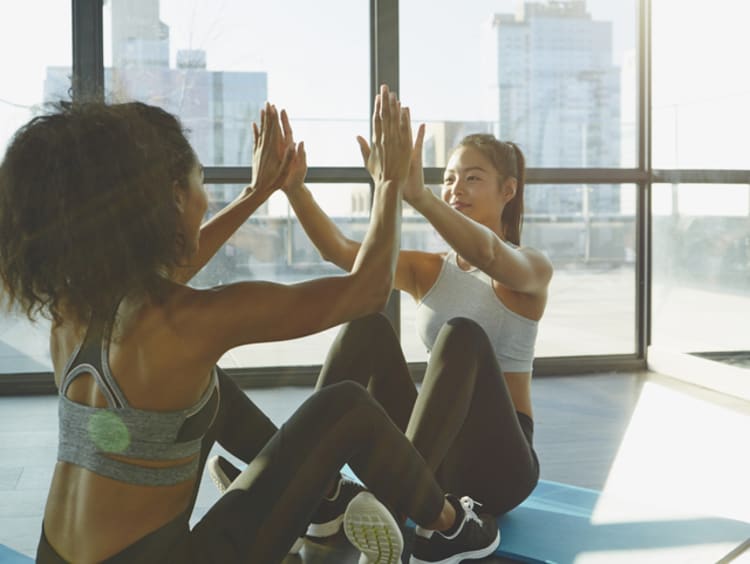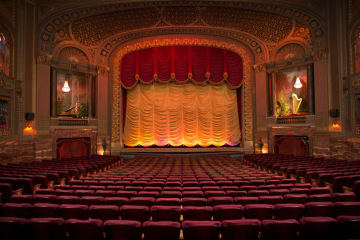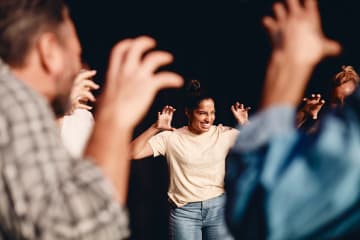Exercise for Dancers: Physical and Mental Demands

Being a dance major requires a strong body and mind. Dancers must be well-conditioned to meet the physical demands of the program. A lack of strength training for dancers may leave them vulnerable to injuries. This blog will explore the importance of physical stamina and offer exercises for dancers that can help improve dance technique. To meet the physical demands of a dance degree program, it is also essential to incorporate the body-mind connection when preparing workouts for dancers.
In This Article:
Physical Stamina
You may be asking yourself, What type of fitness is required to get a dance degree? On top of academic lecture classes, a dance major will be taking several dance classes during the day followed by dance rehearsals late into the evening. This physically demanding schedule requires that students develop endurance through a specific training program for dancers. The best way to develop endurance for dance is simply to dance. Make sure that you are attending your dance classes and giving the movement sequences everything you’ve got.
Take advantage of other dance training opportunities, including workshops at your university or local companies, guest artist classes and regional dance conferences. Putting yourself out there can also provide a great networking opportunity.
Strength Training for Dancers
Adding a variety of training methods to your routine or cross-training is also beneficial for building up muscular strength and endurance in dance. Pilates, yoga and other group fitness classes are excellent training programs for dancers. Attending your university fitness center may also be a great option that may already be covered in your university costs as a student. Strength training can also increase your cardiovascular endurance and can improve neuromuscular function — your nervous system and muscles working together to create movement.
Workouts for Dancers
While engaging in various exercises, it’s crucial to prioritize your alignment and body positioning for optimal performance.
The core is one of the most important parts of your body in dance. Your core is made up of your pelvis, hips, lower back and abdominals. The core of your body plays a vital role in your body alignment, control and balance. One of the fundamental core exercises used by many dancers is the crunch. A crunch will target the following core muscles: rectus abdominis, internal and external obliques.1
Crunch:
1. On a flat surface, lay on your back (a yoga mat is recommended) with your knees towards the ceiling and your feet flat on the floor approximately hip-width apart. Your lower back should be connected to the floor.
2. Take a few breaths in this position allowing your shoulders to relax.
3. Place your fingertips behind your ears. (Note: as you do the crunch, it is important not to pull your head with your hand. This can cause strain on your cervical spine (neck). You want your core to be doing the work.) Another option is to cross your arms on your chest or leave them by your side.
4. Take a deep inhale. On the exhale, lift your head toward the ceiling allowing your scapula (shoulder blades) to come off the floor while your lower back and feet stay firmly planted.
5. As you exhale, lower your shoulders and head back onto the floor. Your breath should be coordinated with the exercise. For example:
a. Exhale, contract your core and lift your head and shoulders.
b. Inhale and lengthen your spine as you lower down.
c. Repeat this exercise 10-15 times for two to four sets.
There are several variations of the crunch which can also target other core muscles. The bicycle crunch can also target the rectus abdominis (core muscle) as well as your rectus femoris (quadriceps) and intercostals (the muscles in between your ribs).2
Many dance techniques including, but not limited to, ballet, modern, jazz and hip hop require dancers to have strong jumps. To improve the height of your jumps, you will want to build strength in your quadriceps and hamstrings. Squats and lunges are both great exercises for building strength in your quadriceps. These exercises can be performed using only your body weight, or you can add free weights.
Reverse Lunge:
1. Stand in a parallel first position, both your feet and knees facing forward. Make sure to start with your core engaged and your shoulders aligned directly over your pelvis.
2. Take a deep inhale as you step back as far as you can with your left leg, allowing your hips to drop down toward the floor. Keep your core engaged and your shoulders over top of your pelvis (do not allow your shoulders to drop down towards your right thigh). Keep your cervical spine (neck) long and look straight ahead. You want to make sure that your right knee is directly overtop of the right ankle. Do not allow your knee to push forward over top of the right foot. This can lead to pain and injury in the knee.
3. Exhale as you push off with the left foot and return to parallel. Repeat with the right leg. Be sure to coordinate the movement with your breath and keep your core engaged throughout the exercise. Complete 10-12 times on each leg for two to four sets.
Strong Mind
Dancers must not only take care of their bodies to support the physical demands of a dance degree program, but they also need to consider exercising their mental health. Have you ever had a dance teacher tell you to leave your baggage (emotional) at the door? Unfortunately, that is not always possible. Somatics refers to the unity of the body and mind.
How your physical health and your mental health are connected can play a part in strength training for dancers. If you have an injury, that injury may have an impact on how you are feeling mentally. If you are experiencing anxiety or depression, that may have an impact on your dancing. Somatics refers to the unity of the body and mind. Several somatic exercises can allow dancers to meditate and relax the body through a focus on breath.
In addition to somatic meditations, there are many ways to focus on exercising your mind. Take at least five minutes a day to meditate, pray or complete a breathing exercise. Journaling is also a great tool to inspire creativity, improve memory and encourage your self-confidence. As a dance student, your schedule is likely packed. Allocate time for socializing with friends and family while also prioritizing self-care and enhancing your strength training for dancers.
Discover the transformative power of training programs for dancers. Work toward elevating your craft both physically and mentally through our program tailored for dancers. Embrace the importance of dance exercise and its impact on your artistry. Consider pursuing a Bachelor of Arts in Dance at Grand Canyon University while refining your skills with us. Unleash your potential, conquer challenges and reap the rewards of committed exercises for dancers. Fill out the form on this page to learn more.
1 Nike. (2022, June 29). What Muscles Do Sit-Ups and Crunches Work? Retrieved on Jan. 8, 2024.
2 Boldt, A. (n.d.). What Muscles Do Bicycle Crunches Work? Livestrong. Retrieved on Jan. 8, 2024.
Approved by the director of dance for the College of Arts and Media on Feb. 9, 2024.
The views and opinions expressed in this article are those of the author’s and do not necessarily reflect the official policy or position of Grand Canyon University. Any sources cited were accurate as of the publish date.


